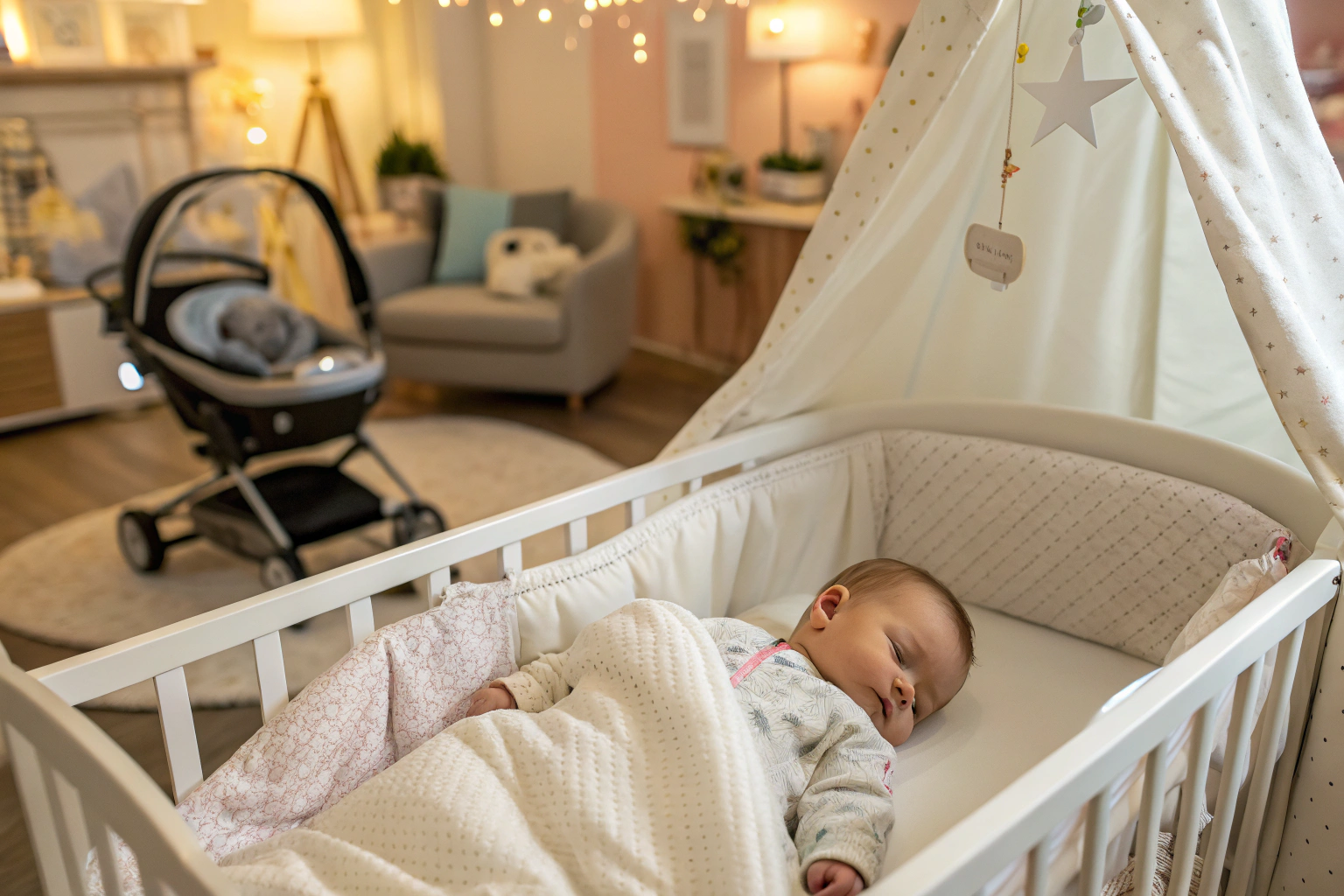As a parent, nothing is more important than your baby's comfort and safety. You spend hours researching the best cribs, car seats, and baby monitors. But have you given the same level of thought to the fabrics touching your baby's delicate skin 24/7? Choosing the wrong material can lead to discomfort, skin irritation, and even health risks. At Fumao Textiles, with over two decades of experience supplying fabrics for global children's wear brands, we understand this dilemma intimately. We know that the "best" fabric isn't a one-size-fits-all answer; it's a careful balance of safety, comfort, functionality, and durability.
So, what is the best fabric for baby clothing and sleepwear? The best fabrics are natural, breathable, soft, and certified to meet strict safety standards. Organic cotton stands out as the top choice for its superior breathability, gentleness, and natural properties. For temperature regulation and luxurious softness, bamboo-derived fabrics are an excellent option. When it comes to sleepwear, safety is paramount, and fabrics must meet stringent flammability standards, making snug-fitting polyester-cotton blends or specially treated cotton a practical and safe choice. The key is selecting fabrics that are free from harmful chemicals and gentle enough for a baby's sensitive ecosystem.
Let's explore the critical factors that go into this decision. We will break down the pros and cons of different materials, explain important safety certifications, and guide you on what to look for when sourcing or manufacturing baby clothing. This knowledge is crucial not just for parents, but for any brand aiming to create the safest, most comfortable baby apparel on the market.
What are the safest fabrics for sensitive baby skin?
A baby's skin is up to 30% thinner and more permeable than adult skin. It loses moisture faster and is far more vulnerable to irritation from chemicals, rough textures, and allergens. This is why the choice of fabric is not just about comfort—it's a critical health decision. As a fabric manufacturer, we subject our baby-wear materials to over 50 different tests to ensure they form a protective, gentle layer around the child.
The safest fabrics are inherently natural, breathable, and free from toxic residues. Organic cotton is the undisputed champion here. Grown without synthetic pesticides or fertilizers, it eliminates the risk of skin exposure to harsh chemicals. Its long, breathable fibers create a soft, hypoallergenic fabric that allows air to circulate, reducing the risk of heat rash and overheating. Another superb option is Bamboo Viscose (BAMSILK), known for its incredible softness, moisture-wicking properties, and natural antibacterial qualities, which help prevent odor and bacterial growth. For ultimate luxury and breathability, Tencel™ Lyocell, made from sustainably sourced wood pulp, is exceptionally smooth and gentle, with fibers that are less likely to irritate even the most sensitive skin.
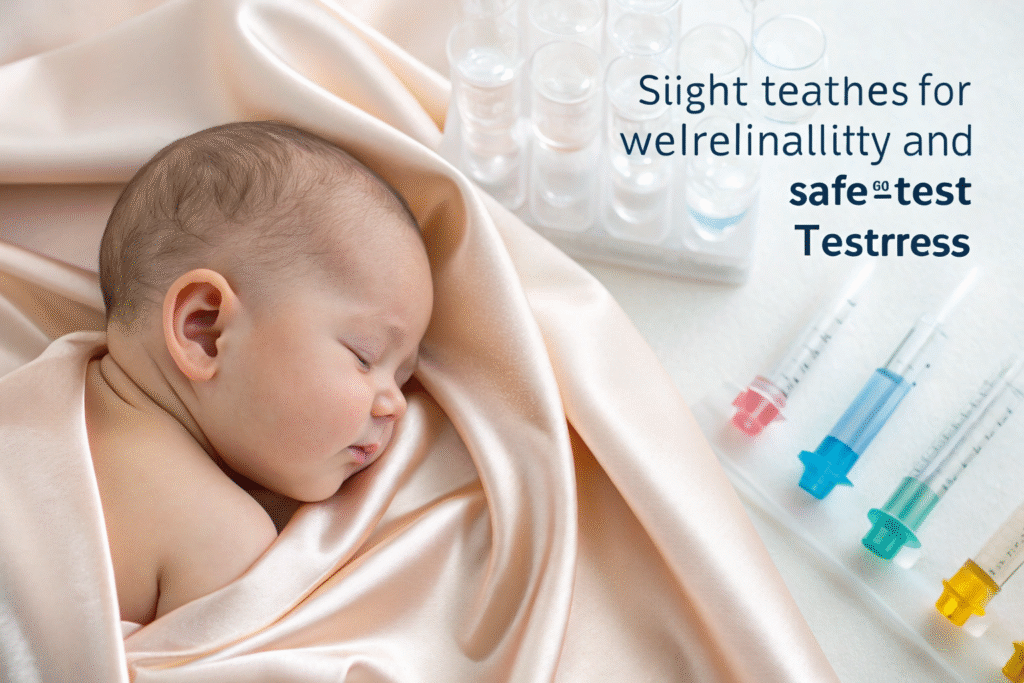
Why is organic fiber certification crucial for baby clothes?
When you see a fabric labeled as "organic," you should look for a reputable certification. This is your guarantee that the product meets rigorous standards from field to fabric. Certifications like the Global Organic Textile Standard (GOTS) ensure that the entire production process—from harvesting the raw materials to the environmentally and socially responsible manufacturing—is certified organic. This means the fabric is guaranteed to be produced without toxic bleaches, heavy metal dyes, or formaldehyde. For brands, using GOTS-certified organic cotton is not just a marketing point; it's a demonstrable commitment to product safety and ethical production. At our facilities, we are proud to offer a wide range of GOTS-certified fabrics, providing our partners with the verified safety their customers demand.
How to ensure fabric meets baby wear safety standards?
Beyond the fiber itself, the fabric's construction and finishing treatments are vital for safety. This involves two key areas: physical testing and chemical testing. Physically, fabrics must be durable to avoid pilling or tearing, which could create a choking hazard. They should also have good colorfastness to prevent dyes from leaching onto the baby's skin. Chemically, fabrics must be tested for the absence of harmful substances. We utilize our CNAS-accredited lab to test for a wide array of regulated substances, ensuring compliance with international standards like Oeko-Tex Standard 100, which limits the use of over 100 harmful chemicals. Always ask your supplier for test reports from accredited third-party labs like SGS or ITS to verify these safety claims.
Which fabrics are most comfortable for all-day wear?
Comfort is a multi-faceted concept for babies. It means the fabric must feel soft, not cause chafing, manage moisture effectively, and allow for unrestricted movement. A comfortable baby is a happier baby, and comfort is a key driver for repeat purchases in the children's wear market. The goal is to find fabrics that act like a second skin, providing comfort that lasts through naps, feedings, and playtime.
The most comfortable fabrics are those with a smooth fiber surface, good moisture absorption, and natural elasticity. Pima or Supima cotton are premium varieties with extra-long staples, resulting in an exceptionally smooth and strong yarn that resists pilling and retains its softness wash after wash. Bamboo viscose is often described as feeling like "butter" due to its outstanding drape and silky-smooth hand feel. It is also highly breathable and absorbs moisture better than cotton, keeping the baby dry and comfortable. For stretch and fit, blends of cotton with a small percentage of spandex are ideal. This combination provides the comfort and breathability of a natural fiber with the flexibility needed for active babies to crawl and move freely.
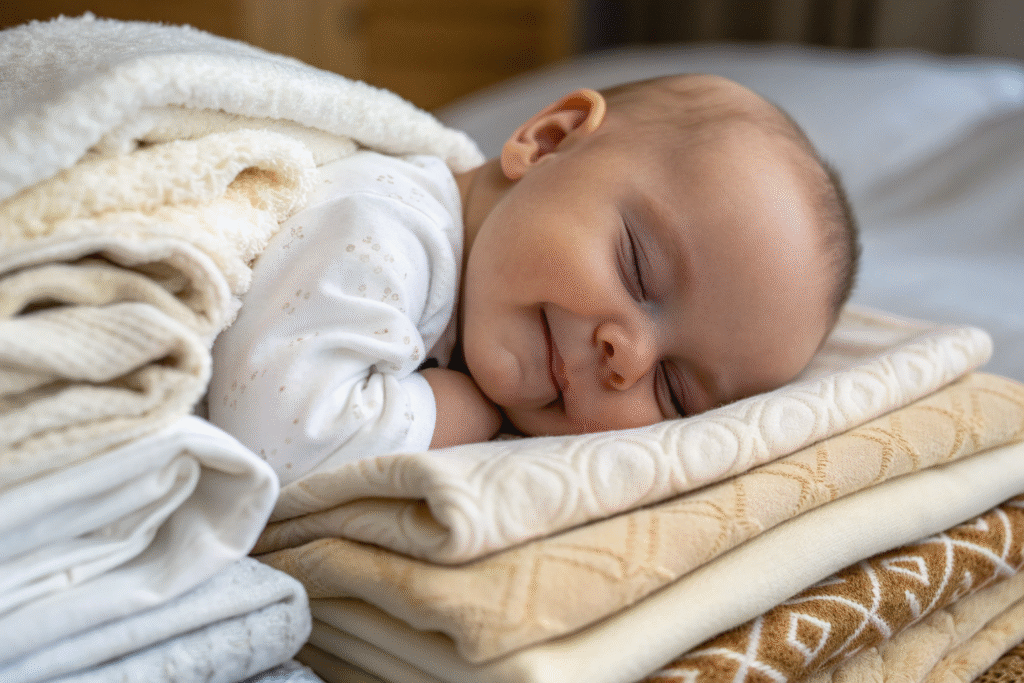
What makes a fabric breathable and moisture-wicking?
Breathability refers to a fabric's ability to allow air to pass through it, which helps regulate body temperature. Moisture-wicking is the fabric's capability to pull sweat away from the skin to the outer surface, where it can evaporate. Natural fibers like cotton, linen, and bamboo are naturally breathable because of their cellular structure. For enhanced performance, some synthetic blends are engineered with moisture-wicking technology. However, for all-day comfort against sensitive skin, natural breathability is often superior. A breathable fabric prevents the buildup of heat and humidity inside the clothing, which is a common cause of heat rash and discomfort for babies.
How does fabric weight and weave affect comfort?
The weight and weave of a fabric directly impact its feel and functionality. For baby clothing, lighter weights and simple weaves are generally best.
| Fabric Weight | Ideal Use | Common Weaves |
|---|---|---|
| Lightweight (120-160 GSM) | Summer wear, onesies, singlets | Jersey, Interlock, Voile |
| Medium Weight (180-220 GSM) | All-season pajamas, pants, tops | Jersey, Rib Knit, Waffle |
| Heavyweight (240+ GSM) | Winter wear, sweatshirts, jackets | French Terry, Sweatshirt Fleece |
A jersey knit is soft, stretchy, and comfortable for most basic baby clothes. Interlock knit is a double-knit that is thicker, smoother, and more durable than jersey, making it a premium choice for high-end babywear. For warmer weather, a plain weave like voile is lightweight and airy. Choosing the right combination of weight and weave ensures the fabric is not too heavy or too thin, providing optimal comfort for the specific garment and climate.
How to choose durable and easy-care baby fabrics?
Parents are busy, and baby clothes need to withstand daily wear and frequent, often harsh, washing cycles. Durability and easy care are not just conveniences; they are economic necessities. A garment that shrinks, fades, or pills after a few washes reflects poorly on the brand and leads to dissatisfied customers. From a manufacturing standpoint, durability is engineered through fiber selection, yarn spinning, fabric construction, and finishing techniques.
The most durable and easy-care fabrics are often blends that leverage the strengths of different fibers. A classic polyester-cotton blend is a workhorse for a reason: the cotton provides softness and breathability, while the polyester adds strength, wrinkle resistance, and reduces shrinkage. For superior softness with better durability than standard cotton, ring-spun cotton is an excellent choice, as the twisting process creates a stronger, finer yarn. When it comes to care, look for fabrics that are pre-shrunk and have undergone functional finishes like easy-care or wrinkle-resistant treatments. These features ensure the garment maintains its size, shape, and appearance through countless trips through the washing machine.
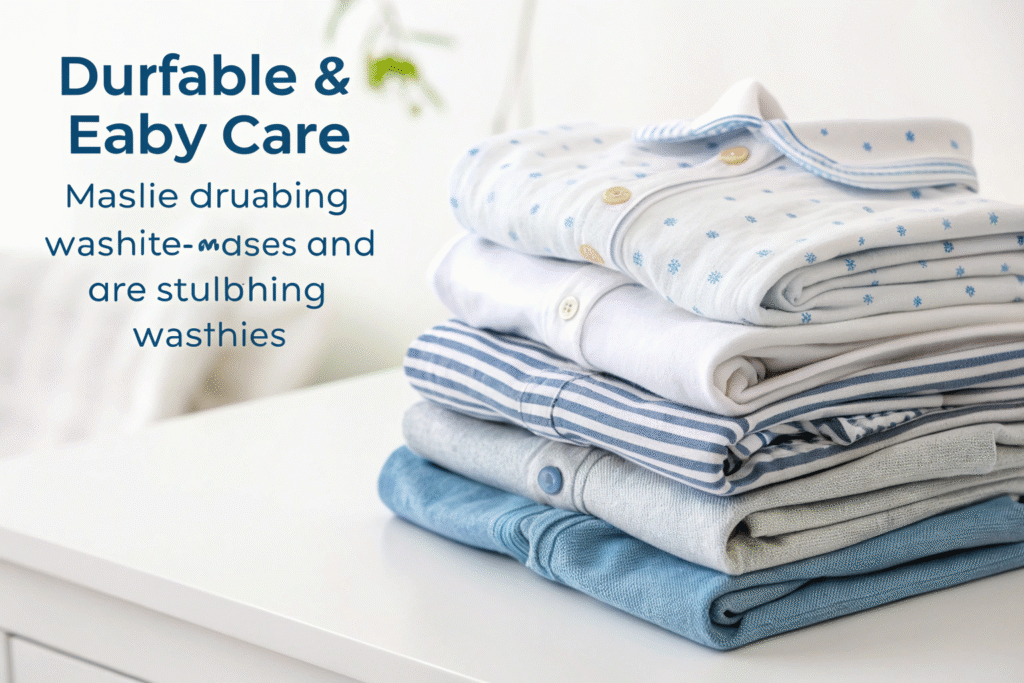
What fabric properties prevent pilling and shrinkage?
Pilling occurs when short fibers work their way to the fabric surface and tangle into tiny balls. Shrinkage happens when fabric relaxes back to its natural state after the tension of manufacturing is released through heat and agitation. To combat pilling, longer-staple fibers like Pima cotton or Tencel are superior, as they create stronger yarns with fewer loose ends. Tightly constructed weaves like a high-grade interlock knit also resist pilling. To prevent shrinkage, the fabric must be mechanically or chemically pre-shrunk during the finishing process. This is a non-negotiable step in our production for baby wear, and we provide precise shrinkage rate data for all our fabrics to ensure consistent sizing after laundering.
Why are colorfastness and wash durability important?
Colorfastness is the resistance of a fabric's color to fading or bleeding. Poor colorfastness is not just an aesthetic issue; it can mean that dyes are not properly fixed and could potentially transfer to a baby's skin. Wash durability refers to the fabric's ability to maintain its integrity, softness, and size after repeated washing. We test our fabrics for colorfastness to washing, rubbing, and light to ensure they meet the highest standards. Using high-quality, reactive dyes and proper fixation techniques is essential. A durable, colorfast fabric ensures the product looks new for longer, building brand loyalty and reducing waste from discarded, faded garments.
What should you know about baby sleepwear safety?
Sleepwear safety is a regulated category for a very good reason. The U.S. Consumer Product Safety Commission (CPSC) has strict flammability standards for children's sleepwear to protect them from burn injuries. Understanding these regulations is legally mandatory for any brand selling in markets like the United States, Canada, and the European Union. Ignorance is not an excuse and can lead to severe legal and reputational consequences.
Sleepwear for children between 9 months and size 14 must be either snug-fitting or flame-resistant. Snug-fitting garments, made from tight-fitting patterns, reduce the air space between the fabric and the skin, minimizing the risk of ignition and the speed of burning. These can be made from any fabric, but cotton or cotton-blend knits are most common. Flame-resistant garments are typically made from synthetic fibers like polyester or specially treated cotton that self-extinguish when exposed to a flame. It is critical to note that loose-fitting, soft, and fluffy cotton sleepwear, which seems comfortable, can be highly flammable and is often prohibited by safety standards.
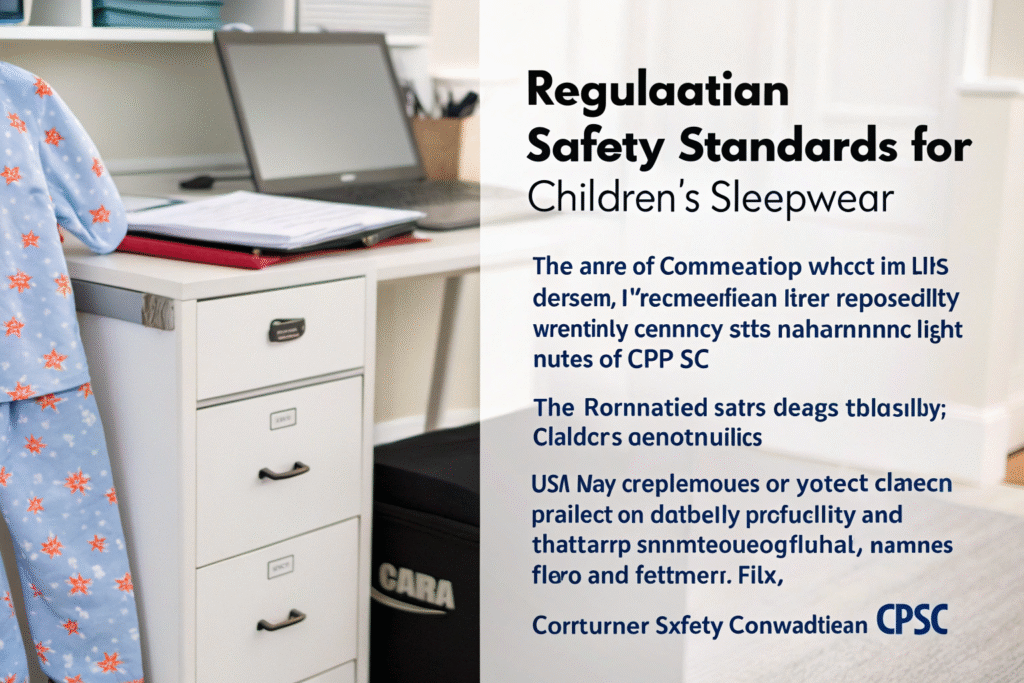
How do flammability standards affect fabric choice?
Flammability standards, such as the CPSC's 16 CFR Part 1615/1616, directly dictate the types of fabrics you can use for sleepwear. If you choose to make snug-fitting sleepwear, the fabric itself does not need to be flame-resistant, but the garment's design and fit must pass specific criteria. If you opt for a looser fit, the fabric must inherently pass vertical flame tests. This often leads manufacturers to choose polyester or acetate blends, as these synthetics tend to melt rather than sustain a flame. However, these may be less breathable than cotton. The safest and most popular approach is to use comfortable, breathable knit fabrics like cotton jersey in a snug-fitting pattern, ensuring both comfort and compliance.
What are the best fabric blends for safe sleepwear?
The best blends balance safety, comfort, and durability. A 94% Cotton / 6% Spandex blend is an industry favorite for snug-fitting sleepwear. The cotton provides breathability and softness, while the spandex ensures a snug, flexible fit that moves with the child and maintains its shape. For brands seeking a slightly more durable and wrinkle-resistant option, a 50% Cotton / 50% Polyester blend is excellent. It remains soft, is less prone to shrinkage, and the polyester content contributes to flame resistance in case of a loose-fit design. At Fumao, we guide our clients through this complex decision, providing certified fabrics that are tested and guaranteed to meet the required safety standards for their target market.
Conclusion
Choosing the best fabric for baby clothing and sleepwear is a profound responsibility. It requires a deep understanding of material science, safety regulations, and the practical needs of both babies and parents. The ideal choice consistently points towards certified natural fibers like organic cotton for daily wear and carefully selected, compliant fabrics for sleepwear. The key takeaways are to prioritize safety certifications like GOTS and Oeko-Tex, value breathability and softness from fibers like bamboo and Tencel, and demand durability and easy-care properties from your supplier.
Ultimately, the right fabric builds trust. It tells your customers that you care as much about their child's well-being as they do. It transforms a simple garment into a promise of safety, comfort, and joy. If you are a brand, retailer, or buyer looking to create a line of high-quality, safe, and comfortable baby clothing, you need a fabric partner who understands this journey from the ground up.
We invite you to experience the Fumao difference. Let us help you create baby apparel that parents trust and babies love. For a personal consultation on your next baby clothing fabric order, please contact our Business Director, Elaine, at elaine@fumaoclothing.com. We are ready to support you with our end-to-end supply chain, from expert R&D to certified, safe, and delightful fabrics.

